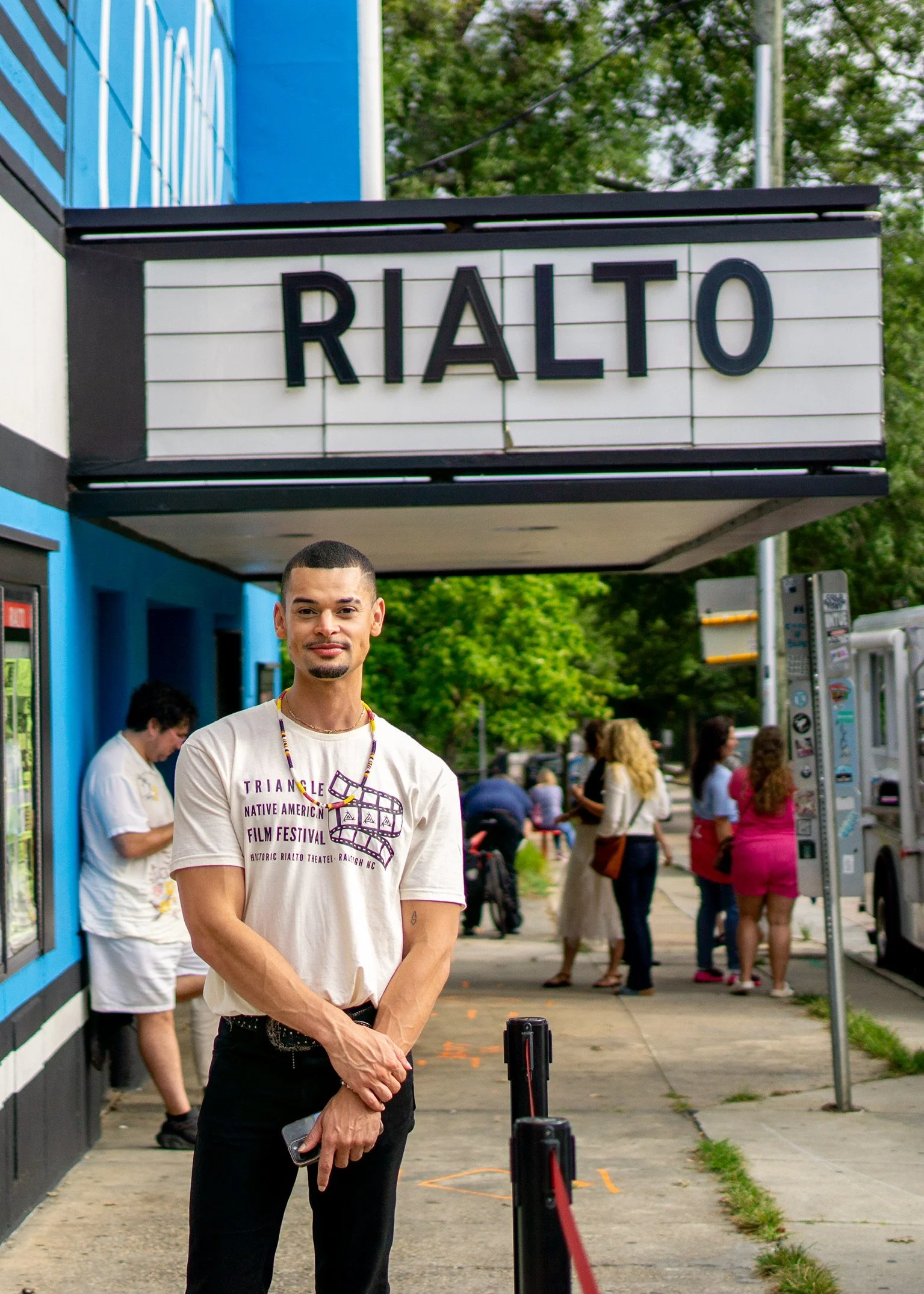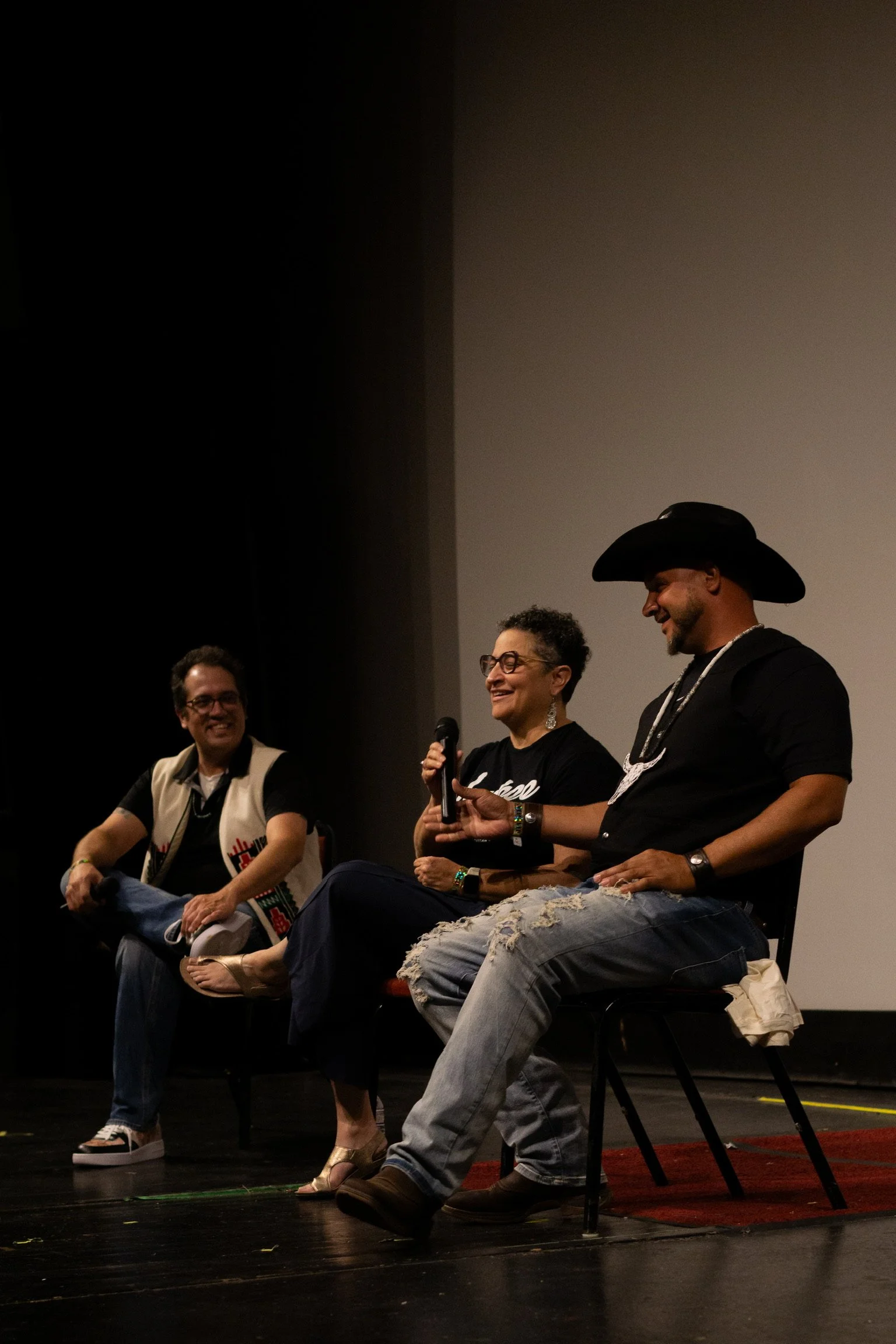The Importance of the Triangle Native American Film Festival
Photo by Jocelyn Painter
By Trey Roberts (Haliwa-Saponi)
Every other Friday, my mother would drive us into town from Hollister, NC, with my grandmother riding in the front seat. After restocking household supplies, feeding us, and buying groceries, we’d always end the trip at Blockbuster or Hollywood Video. That was the part I anticipated most — because my sister and I each got to pick one movie to enjoy for the weekend.
And when I say for the weekend, I mean it. I would watch my pick over and over again — obsessively, joyfully. Some of my favorites were School of Rock, Lord of the Rings, Harry Potter, Josie and the Pussycats, Scream, and many more. My mother used to joke that I loved movies so much because she saw Silence of the Lambs while pregnant with me — which, fittingly, became one of my all-time favorites.
I used to fantasize about making my own stories. Embarrassingly, I’d act them out alone in my room, mimicking every sound effect from the action-packed scenes I imagined. Later, I discovered DVD director’s commentaries — those behind-the-scenes extras where filmmakers explained how movie magic was made. Those features changed everything. I started writing my own screenplays, learning camera techniques, printing out scripts from the internet, and practicing scenes in front of the mirror. I consumed films relentlessly.
Once I got my driver’s license, I started driving into Raleigh to watch independent films at The Rialto Theater — the kinds of movies that challenged how I thought and saw the world. It expanded my whole worldview outside from what I was used to and taught me experiences that I could learn from that I couldn’t experience.
But I was growing up in rural Hollister, NC — a place where I had never seen a film set or met someone who worked in film. The possibilities felt limited, like a goldfish confined to the waters it swims in. And yet, my family, my teachers, and my tribe always reminded me that I could dream beyond the pines. Thanks to them, I’ve been able to accomplish things I know young Trey would be proud of.
Still, there’s always been a part of me that wished I had something that could’ve cultivated my love for film earlier on. In my work with the Triangle Native American Society, I often think of younger Trey — and what he needed to feel seen and to believe it was possible to become a filmmaker. I think about other in the Native community with dreams bigger than their surroundings.
Mainstream media rarely gives our stories the spotlight. But Indigenous stories, told by Indigenous people, starring Indigenous people — they matter. They deserve space. They deserve celebration. If 16-year-old me had seen films made by people from my own community, I think that spark would have turned into a fire much sooner.
To be seen is to feel inspired — to feel connected.
So now, through our work with TNAS, I see every project as a seed. A seed that can grow into new ways for our community to thrive and connect with our Indigeneity — not just through tradition, but through creativity, through cinema. It’s not just about showing our stories to non-Native audiences; it’s about showing them to ourselves.
To see these films is to be seen. To be seen is to feel inspired — to feel connected. That’s why we created the Triangle Native American Film Festival: to inspire creativity, representation, and self-belief. It’s a source of pride to show our stories beyond the historical lens — because who we are today is complex, brilliant, and deserving of screen time. And maybe, just maybe, these stories won’t just inspire others to make film — but to be better to one another, too.



